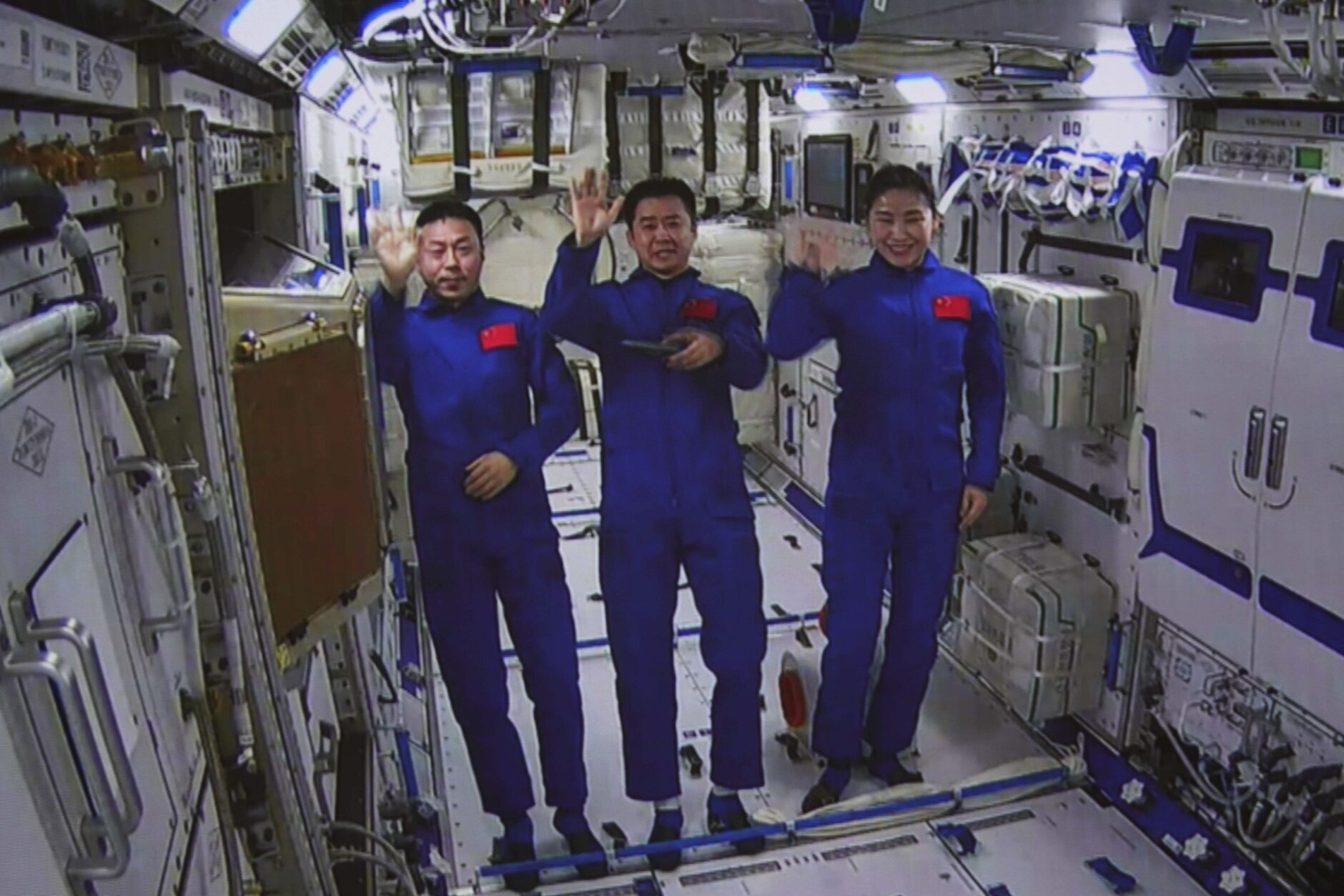
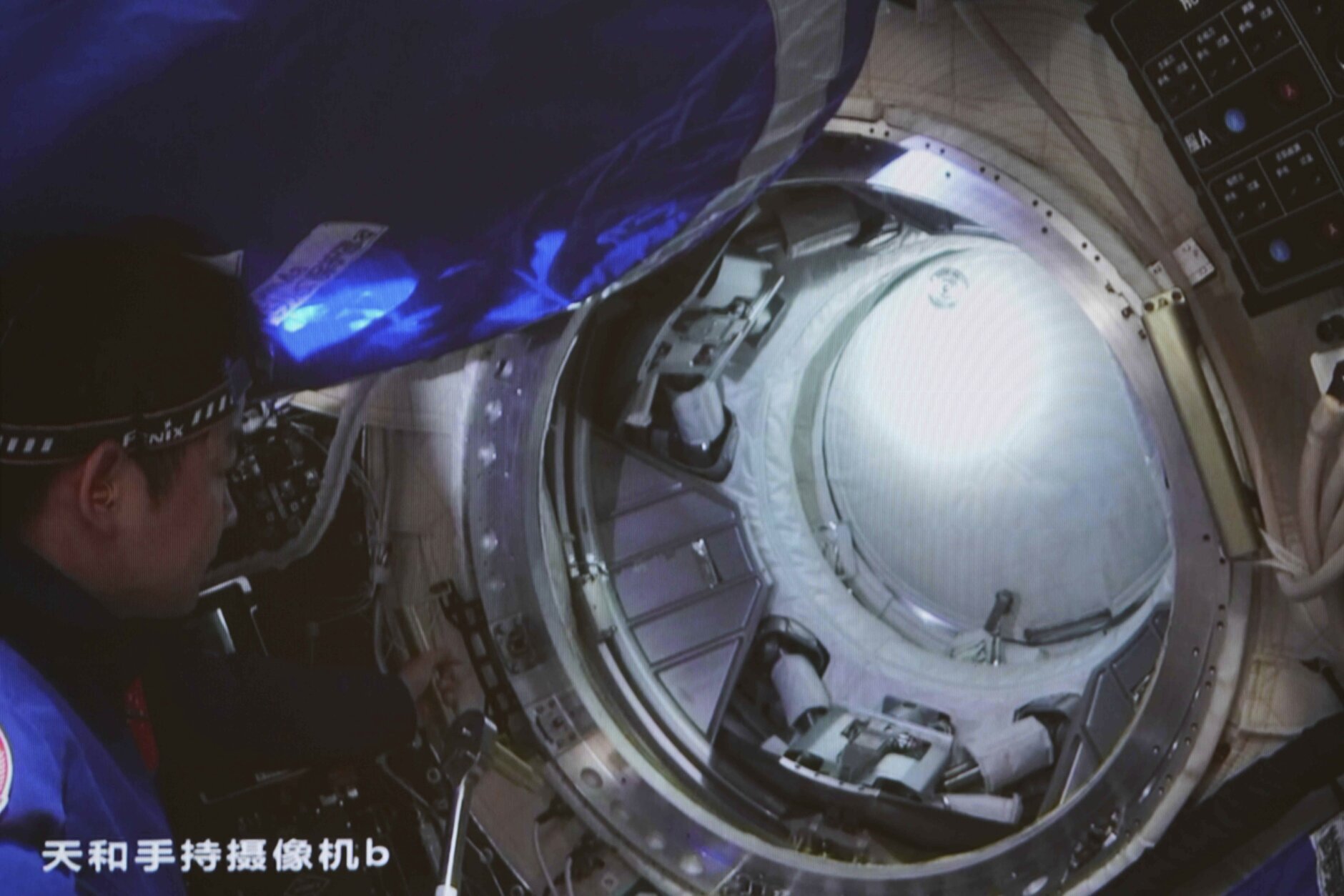
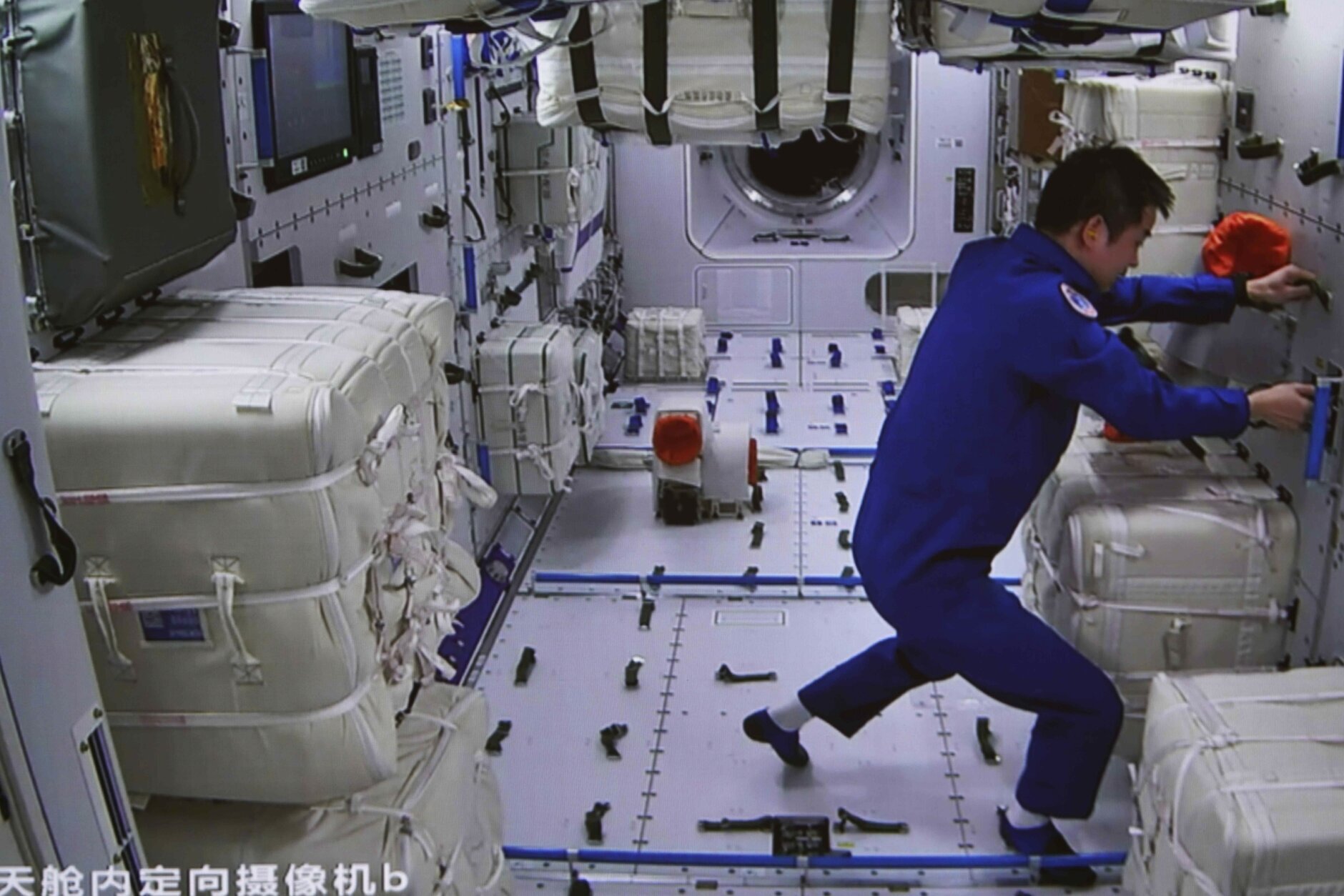
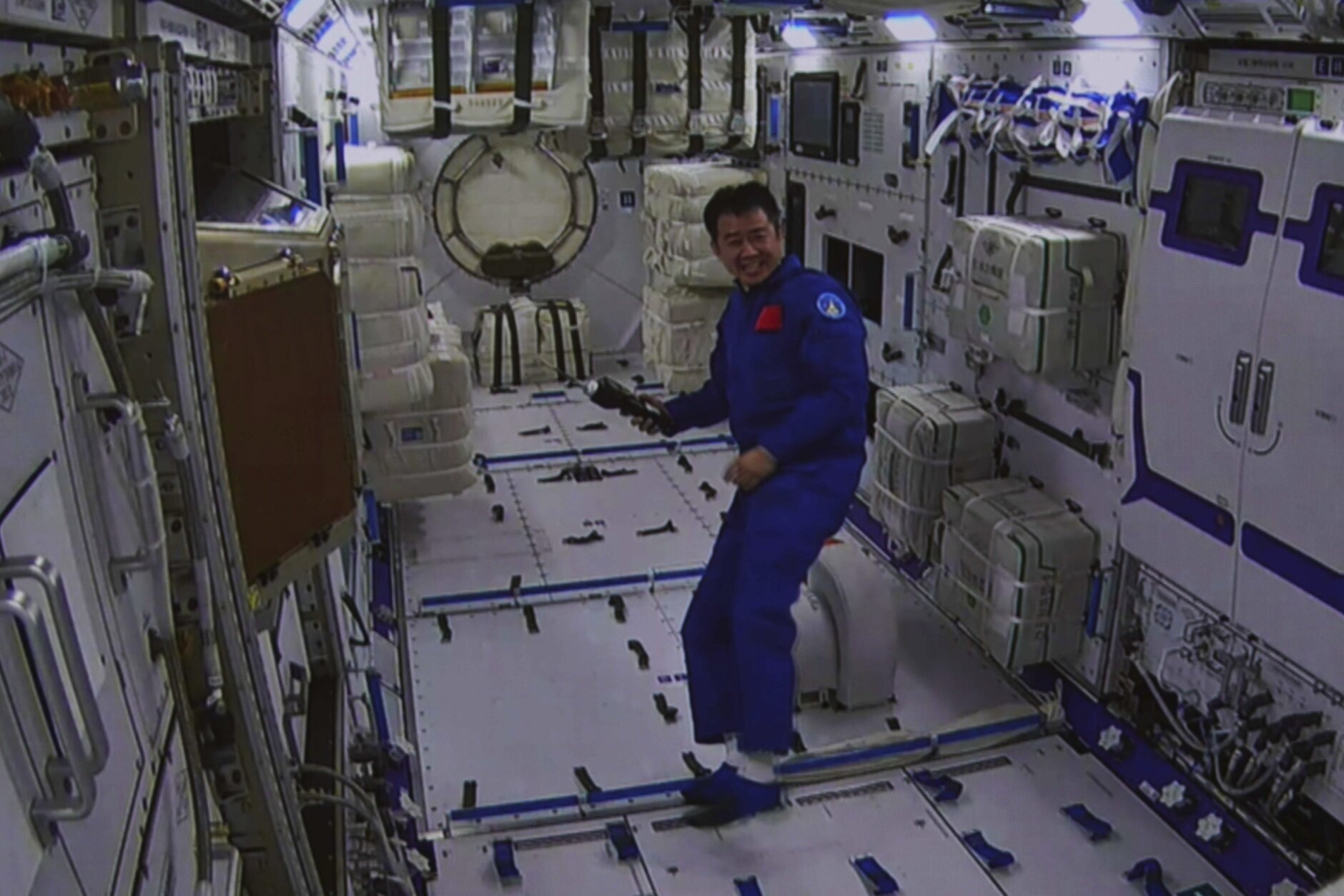
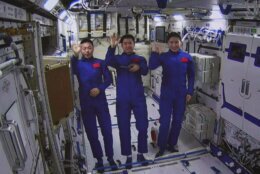
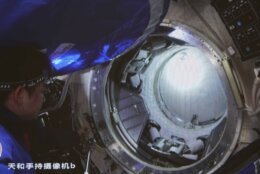
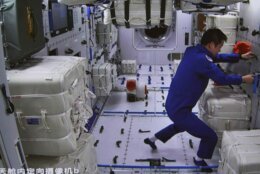
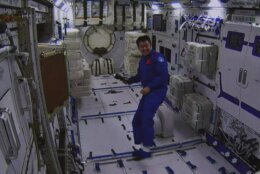
BEIJING (AP) — China added a laboratory to its permanent orbiting space station Monday as it moves toward completing the structure in coming months.
The Wentian laboratory was launched from the Wenchang space base on the tropical island province of Hainan on Sunday with a large crowd of amateur photographers and space enthusiasts watching.
After 13 hours of flight, it successfully docked with the Tianhe living area of the Tiangong space station at 3:13 a.m. Monday (1913 GMT), according to the China Manned Space Agency.
Photos distributed by Xinhua News Agency later showed the three astronauts inside the expanded space station.
The 23-ton Wentian laboratory is designed for science and biology experiments and is heavier than any other single-module spacecraft currently in space, according to the state-owned Global Times.
Three astronauts who started their six-month mission aboard the space station last month oversaw the Wentian’s arrival and docking.
A second laboratory segment, the Mengtian, is due to be launched in October and will complete the space station.
A Long March 5B-Y3 rocket, China’s most powerful, carried the laboratory module in the third such launch since the Chinese space station entered its construction phase. It was preceded by the Tianzhou-class cargo spacecraft and the Shenzhou-14 crewed spacecraft.
China’s space program is run by the ruling Communist Party’s military wing, the People’s Liberation Army, and has largely proceeded with the Tiangong program without other nations’ assistance. The U.S. excluded China from the International Space Station because of its military ties.
China launched its first astronaut into orbit in 2003, making it only the third country to do so on its own after the former Soviet Union and the U.S. Its space program has landed robot rovers on the moon and placed one on Mars last year. China has also returned lunar samples and officials have discussed a possible crewed mission to the moon.
Copyright © 2024 The Associated Press. All rights reserved. This material may not be published, broadcast, written or redistributed.






